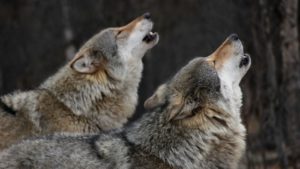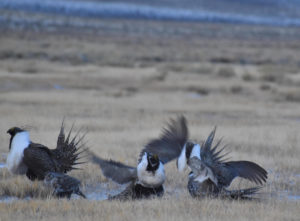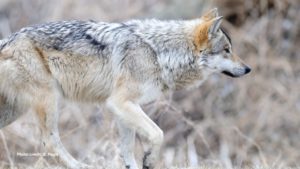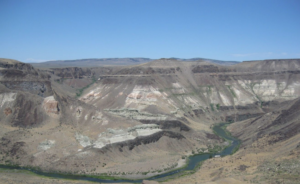Conservationists File Suit Against Federal Agencies to End Bison Slaughter
For immediate release – Novermber 9, 2009
Contact: Tom Woodbury, Western Watersheds Project (406) 830-3099
Stephany Seay, Buffalo Field Campaign, (406) 646-0070
Failed Management Endangering American Icon, Wasting Millions Annually
MISSOULA, MONTANA – A coalition of conservation groups, Native Americans, and Montanans are suing the National Park Service for their role in slaughtering 3,300 wild American bison that inhabit Yellowstone National Park. Approximately 3,000 bison remain in Yellowstone today because of aggressive population control implemented under the controversial Interagency Bison Management Plan (IBMP) adopted nine years ago.
The groups assert that the Park Service is violating its statutory mission to preserve wild bison and “leave them unimpaired for the enjoyment of future generations.”
The suit also cites the U.S. Forest Service for failing to manage the Gallatin National Forest in a way that would allow for healthy populations of bison, sage grouse, and related wildlife. Both agencies have refused requests by plaintiffs and others to reconsider the bison management plan in light of new scientific information and changed circumstances related to bison, including a recent independent study which concluded that the actual risk of disease transmission from free-roaming bison to cattle in Montana would be zero in most years, and limited to predictable “hot spots” in others.
Rosebud Sioux tribal elder Rosalie Little Thunder, chairperson for plaintiff Seventh Generation Fund’s Tatanka Oyate Project, says, “The continuing slaughter of wild buffalo by the National Park Service is an affront to indigenous peoples and an abrogation of the government’s trust responsibilities to the American people and American Tribes.”
According to Tom Woodbury, the Montana Director for Western Watersheds Project, the lead plaintiff in the suit, the IBMP is broken. “One of the twin aims of the bison plan was ‘to ensure the wild and free-ranging nature of American bison'” said Woodbury. “While the Park Service was sending over 1400 bison to slaughter in 2008, a Congressional investigation was concluding that the agencies are no closer to ensuring free-roaming bison today then they were in 2000,” Woodbury said.
In a report released in 2008, the Government Accountability Office determined that the IBMP agencies, “lack accountability among themselves and to the public.”
The American bison is recognized as a keystone species. Bison’s distinctive grazing, wallowing and horning behavior creates important habitat for many “species of concern” in Montana, including the sage grouse.
According to Glenn Hockett, a range ecologist and President of the plaintiff Gallatin Wildlife Association, “Bison play a key role in keeping prairie grasslands healthy and are an important food source for human hunters, grizzly bears, wolves, eagles, and many other species. Our members value wild bison as a Montana big game species as well as for wildlife viewing and photography.”
A recent study by the U.S. Fish and Wildlife Service concluded that “wildlife watching is a major force, driving billions in spending around the country.”
“These economic impacts can be the life-blood of a local economy,” according to the study, and “rural areas can attract thousands of wildlife watchers each year, generating millions of dollars.”
Meghan Gill, a doctoral student at the University of Montana and long time bison advocate, joined in the suit for her own reasons. “The cruelty to these animals that I and others have witnessed should not be part of a sanctioned government plan,” Gill said.
“I’ve watched government agents haze bison with helicopters in the dead of winter, forcing them to expend the energy they need to survive harsh conditions,” Gill continued, “run them into barbed wire, over frozen lakes where the bison drowned when the ice broke, and worse.”
Gill said she finds it particularly disturbing that “every spring the government agents repeatedly haze calving female bison and newborn calves miles into the park off of Horse Butte peninsula despite the protests of local residents who have attempted to create a bison sanctuary there by buying out all the ranches and removing all the cows. This year they even chased a newborn calf with a broken leg,” Gill said, “but every year there are similar stories.”
Gill maintains that “the day-to-day bison management operations are a complete waste of taxpayer dollars on an inexcusable, illogical plan that most people would never condone if they witnessed it themselves.”
Stephany Seay, a spokesperson for Buffalo Field Campaign, another plaintiff in the suit, disputes the common but unsubstantiated claim by the State of Montana that lethal bison management is necessary to protect livestock from brucellosis, a minor European cattle disease. “Brucellosis is a fraud being used by the cattle industry to maintain control over public lands grazing,” Seay said. “This issue is not about brucellosis at all; it’s a centuries-old range war being fought over who gets to eat the grass.”
The Yellowstone bison population includes America’s last continuously wild herds, and is the last population that still follows its migratory instincts. As unique native herbivores that evolved across the North American continent, scientists believe bison can help restore the native grasslands, sagebrush steppes, and prairie ecosystems that are considered to be some of the most endangered habitats in the world.
Dr. Sara Johnson with Native Ecosystems Council, another party to the suit, points out that sagebrush has been called “the mother of all ecosystems.” She says, “contrary to the prevailing view of these lands as scrublands when cattle were introduced, sagebrush habitat has more biological diversity associated with it than any other habitat we know of.” Johnson says, “managing natural bison habitat for cattle, as the Forest Service has been doing for too long, favors invasive weeds, degrades our shared landscapes, and harms sensitive species like sage grouse, pygmy rabbits, and Brewer’s sparrow.”
The coalition is asking the Court to prevent the U.S. Forest Service and National Park Service from continuing to participate in, allocate funding for, or permit the slaughter of wild bison on public lands, including trapping for transport to slaughter houses and quarantine facilities. The suit would not affect the state of Montana’s bison hunt, scheduled to begin November 15, 2009, nor would it affect Native American tribes that retain treaty rights to hunt bison on National Forest lands.
“Instead of federal persecution,” Seay concluded, “America’s last wild bison population deserves federal protection.”





